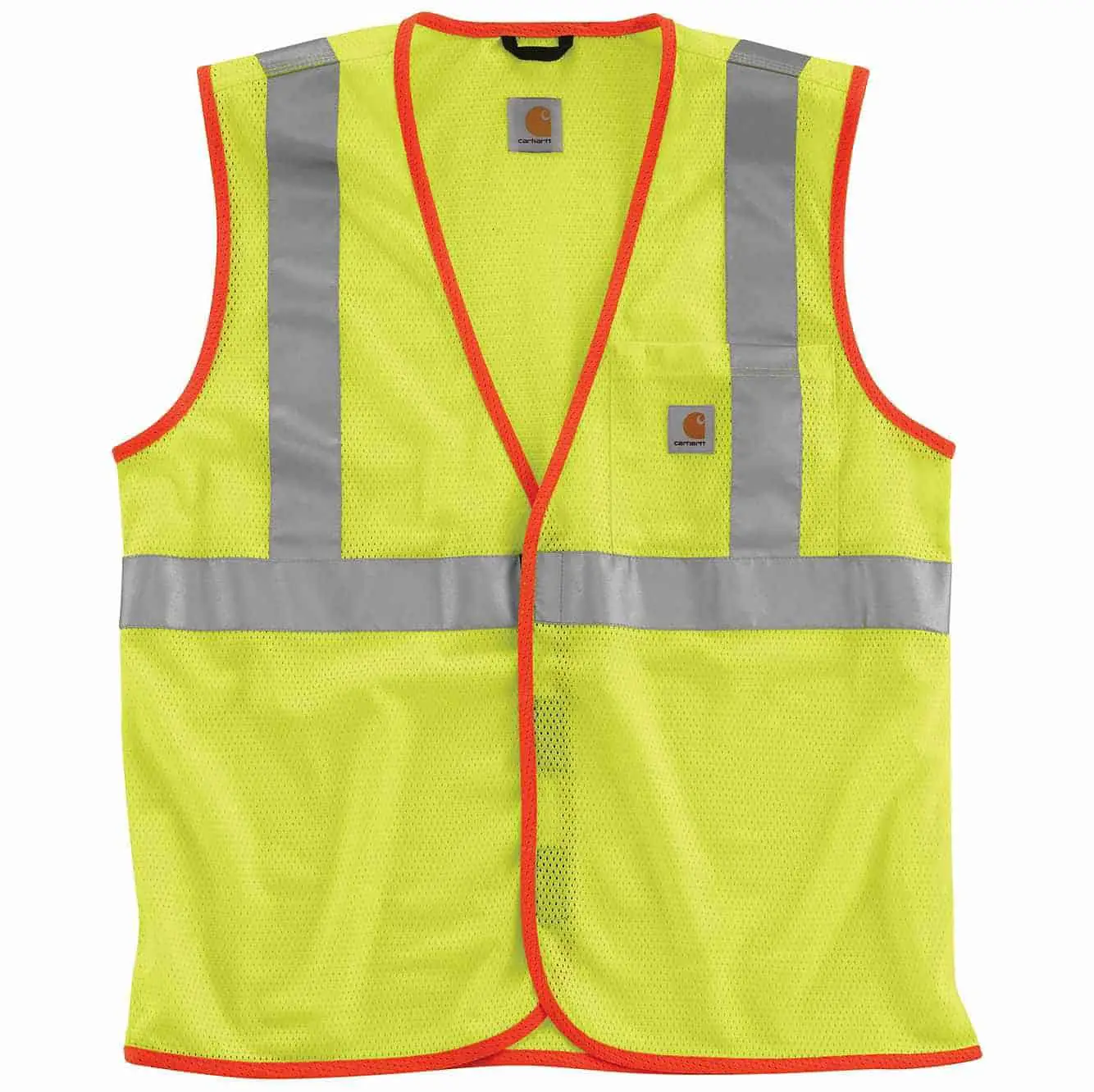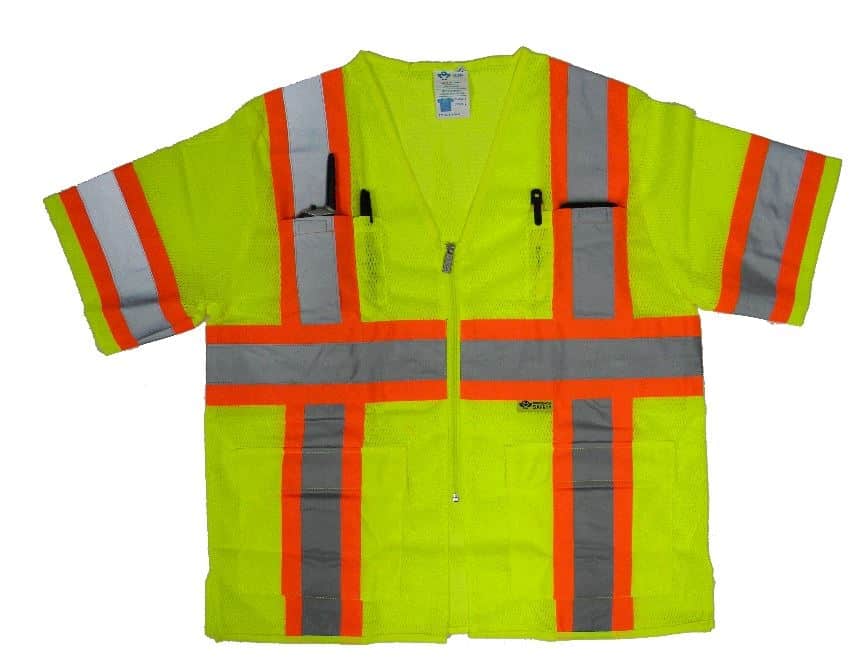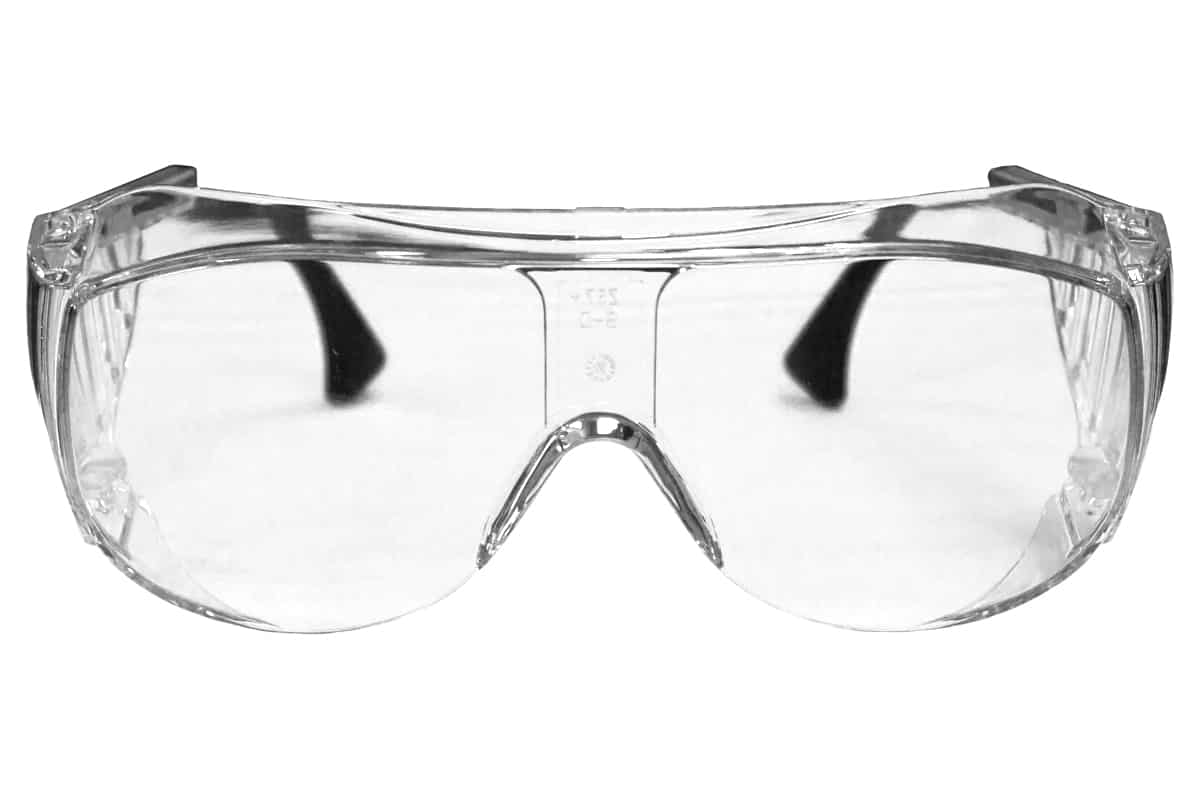According to OSHA safety vest regulations, the difference between class 2 and class 3 safety vests are as follows:
ANSI Class 2 Safety Vests: This type of safety vests should be worn by workers near traffic between 25-50 mph, working with heavy machineries, working in inclement weather and working in low visibility conditions.
ANSI Class 3 Safety Vests: This type of safety vests should be worn by workers near traffic more than 50 mph and working in dark or zero visibility conditions. These vests have full sleeves so that they can meet the requirements of high visibility and reflective materials.
Combining ANSI Class 2 safety vest with ANSI Class E safety pants will fulfill the criterion for ANSI class 3 safety clothing.
What are High Visibility Safety Vests?
High visibility safety vests are a tow truck operator’s best defense in order to stay safe. They are designed to distinguish the worker from the environment and are made of two parts: one is the background material and the other is the retro-reflective strip or it might also be a combined performance contrasting the retro-reflective and the fluorescent material. The color of the background material can be fluorescent orange or fluorescent yellow-green. The retro-reflective material can be silver reflective or prismatic.
The fabrics used in these vests are breathable mesh, cool and comfortable. They are generally synthetic, nylon or polyester materials.
Class 2 Vs Class 3 Comparison Table
| Class 2 safety vests | Class 3 safety vests | |
| Background | Yellow or orange background material of 775 inches | Yellow or orange tape background material of 1240 inches |
| Reflective tape | 201 square inches with 2 inches in diameter | 310 square inches with 2 inches in diameter |
| Reflective stripes | 360 degree over the shoulders and waist | 360 degrees over the shoulders, waist, arms and legs |
| Dimensions | 8.373 linear feet of 2 inches tape | 12.92 linear feet with the width of 2 inches |
| Worn by | Toll booths, airport baggage handlers, parking attendants | Site investigators, railway workers, flagging crews, emergency crews, utility workers |
| Sleeve length | No sleeves | Half or full sleeves |
| Front closure | Velcro or zip | Velcro or zip |
Difference between Class 2 and Class 3 Safety Vests
Class 2 safety vests:
 Workers who work in heavier traffic areas and in low visibility areas should wear class 2 safety vests. These are mostly worn by high-volume parking keepers, toll booth operators, airport workers and forest workers. Class 2 safety vest must have reflective tapes to the length of 201 square inches.
Workers who work in heavier traffic areas and in low visibility areas should wear class 2 safety vests. These are mostly worn by high-volume parking keepers, toll booth operators, airport workers and forest workers. Class 2 safety vest must have reflective tapes to the length of 201 square inches.
Dimensions of the class 2 reflective tapes:
The dimensions of the reflective tape should be as follows:
-
-
- 8.373 linear feet of 2 inches tape
- 12.2 linear feet of 1 3/8 inches tape
-
Location of the class 2 reflective stripes:
-
-
- Over the shoulder area
- Around the middle in either 1 or 2 360 degrees horizontal stripes
-
Class 3 safety vests:
 Workers who work in high traffic areas and right next to roads such as site inspectors, railway track workers, emergency responders and utility crews are required to wear class 3 safety vests. Class 3 safety vests must have reflective tapes to the length of 310 square inches.
Workers who work in high traffic areas and right next to roads such as site inspectors, railway track workers, emergency responders and utility crews are required to wear class 3 safety vests. Class 3 safety vests must have reflective tapes to the length of 310 square inches.
Dimensions of the class 3 reflective tapes:
The dimensions of the reflective tape should be as follows:
-
-
- 12.92 linear feet with the width of 2 inches
-
Location of the class 3 reflective stripes:
-
-
- On the arms
- On the legs
- Full silhouette outlines
-
For a better understanding of the difference between the two classes of safety vests, you can have a look on the YouTube video given below:
Before we say Good Bye:
OSHA requires all workers working in hazardous or high traffic areas to wear safety vests during work hours for workplace as well as personal safety measures.
You need to understand the conditions and requirements of your workplace and assign the particular class of safety vest either class 2 safety vests or class 3 safety vests accordingly to your workers.
Also, you can keep both the classes of safety vests with you so that you can use the right one for the right situations because lighting conditions and traffic keep on fluctuating every time.
That’s all guys for today! Hope to have satisfied you with our article. We will be right back with another article very soon. Till then take care and…
Work safely!







